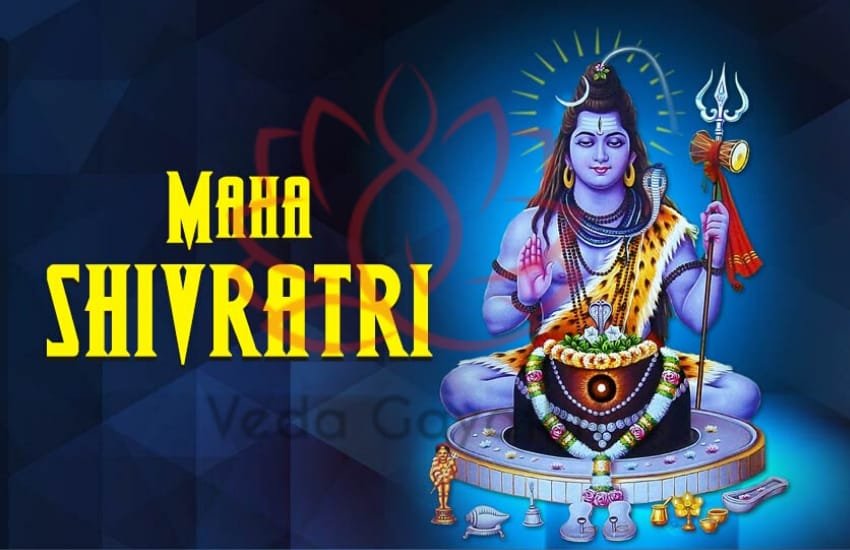
The annual Hindu festival of Maha-Shivratri is dedicated to Mahadev Shiva. Each month of the Hindu lunar calendar has a Shivratri, called Masik Shivratri or monthly Shivratri. Masik Shivratri is a festival that occurs on the 14th night of the dark fortnight or Krishna Paksha, which also happens to be the night before Amavasya (New Moon day). The Shivratri that falls in the month of Falgun (February-March) is of the most significance and is called the Mahashivratri. On this day, planetary alignments are believed to be such that there is an upsurge in the energies not just of planet Earth but of each living being. And thus the night is spent in meditation, prayer and devotion. All major Hindu sacred scriptures mention the significance of the sadhana done in this auspicious time. Those who celebrate this day with true love and bhakti, are blessed with their heart’s desires, whether temporal or spiritual. That is why this day is for all.
Shaivism has been a part of the Indian spiritual tradition, from Kashmir in the North to Tamil Nadu in the South and from Gujarat In the West to the Eastern states of India. The pan India spread of Shaivism is reflected in the 12 famous Shiva Temples, the Jyotirlingas and they find mention in the Shiv Puranas. These are
- Somnath in Gir Somnath, Gujarat
- Mallikarjuna in Srisailam, Andhra Pradesh
- Mahakaleshwara in Ujjain, Madhya Pradesh
- Omkareshwara in Khandwa, Madhya Pradesh
- Kedarnath in Rudraprayag, Uttarakhand
- Bhimashankar in Pune, Maharashtra
- Vishveshwara in Varanasi, Uttar Pradesh
- Trayambakeshwara in Nashik, Maharashtra
- Vaidyanath in Deoghar, Jharkhand
- Nageshwara in Dwarka, Gujarat
- Rameshwara in Rameswaram, Tamil Nadu
- Ghrishneshwara in Aurangabad, Maharashtra
Mahashivratri is believed to be celebrated for various reasons. It is the sacred day that Shiva and Devi Parvati were tied in matrimony. It is the day when after many-many years of meditation Shiva had found stillness, complete stillness and became Adi Yogi. It is believed to be the day when Mahadev drank the halahal to save all life in the world. In Mahadev, everyone can hope to seek something. Families pray to him for a happy family life. Spiritual seekers worship him to find divine stillness and moksha. The ambitious pray to him for successes in the material world.
On Shivratri, devotees keep upvaas for the day and chant their favourite Shiv mantras through the night. They offer flowers, garlands, fruits, water, milk, curd, ghee, honey, vibhuti and bhasm to a murti of Mahadev or to a Shivling. Like in all Hindu prayers, in Shivratri the humble devotee offers to God, what is already his.
Shiva, is also known as Bholenath for he is the easiest to please, to seek forgiveness from and to seek boons from. He granted boons to Ravana, one of his most devoted devotees. After gaining supreme powers from Mahadev’s boon, Ravana got arrogant and conceited and set off to take away Mahadev’s own residence, the Mount Kailash to Lanka! Mahadev gently pressed his toe to the ground, leaving Ravana completely crushed and immobile under Mount Kailash. Ravana, recognising his folly sought forgiveness and composed the beautiful Shiv Tandav Strotram for his beloved Mahadev. Of course, Bholenath forgave him.
Shiva has been loved from time immemorial. In the Bhimbetka caves (Madhya Pradesh), there is a ‘painting of the Nataraj, the dancing Mahadev at Rockshelter number 10. It dates back to the Mesolithic era, which is 20,000 years beyond’.
Shiva is also the Destroyer. The universe ends when his third eye opens and is subjected to his anger… But yogic literature is replete with narrations of his kindness, forgiveness and compassion. He is the Vairagi who finds happiness in the shamshaan and peace in thousands of years of meditation. Yet he is Gauri Shankar and Uma-pati the family man. He is also the first guru; the Adi Yogi who found stillness and gifted Yog science to the world. He is Nataraj, the God of graceful dance movements and presented the joys of dance to the world. He is ardh-naarishwar; the union of Shiv and Shakti, signifying the inseparableness of the male and female and emphasising their symbiotic relationship. He is Chandrashekhar, the one with the moon in his crown. He is Gangadhar, the one who saved the Earth from the fierce descent of Ganga, by giving her place in his jataaye (matted hair). He is the magnanimous Neelkanth who consumed poison to save others. He is also Bhairav and Maha Kaal, the feared.
He is the God of all, of devatas, of asuras and of all living creatures; and thus he is Mahesh and Pashupati Nath. The names fall short to describe, praise and celebrate the most loved God in the Hindu pantheon, and that is why he remains, Devo ke Dev (God of Gods), Mahadev.






Add comment